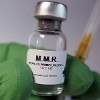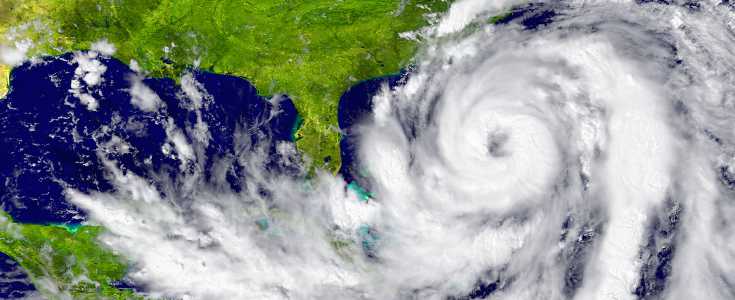As a way of introducing the tasks and skills involved in creating health communication products, MastersinCommunications.com interviewed professionals in the field regarding a project they were involved in. Every communication product and project should include some combination of the following steps:
Identify Goals, Audience, and Scope
Any time a threat to a population occurs, whether local or international, real-time information and advice is necessary to keep the public as safe as is possible. This threat could be immediate, such as a tornado; slow moving, such as food poisoning from corporate products; or ongoing, such as annual influenza. Risk communication is an integral part of any public health emergency response. Risk communication professionals might utilize mass media outlets like television, radio, and newspaper; local meetings with the public; or social media resources like the Facebook Safety Check system and Twitter hashtags to inform people of unsafe conditions in their area. This case study explores the protocol one risk communication organization uses to alert the public via social media during a natural disaster.
While most risk communication has historically been handled by government agencies, private companies have begun to take on some of the burden in recent years. Humanity Road is an organization that was formed to keep the official outlets for communication from becoming overwhelmed when a natural disaster occurs, since calls to police, firefighters, and 911 can overload and shut down telecommunication systems. Their primary goal is to enhance and supplement official disaster communication with the public via social media venues.
During a natural disaster event, Humanity Road works to provide the public and first responders with the most up-to-date and accurate information on:
- Surviving: the location of the disaster impact, which areas are unsafe and routes to safety, where evacuation centers or shelters are located for both people and their animals, and the location of first aid and hospitals
- Sustaining: water, food, and shelter for temporary housing
- Reuniting: resources to reunite people with one another and their animals
In addition to responding to an immediate natural disaster, Humanity Road also has an ongoing social media presence to spread information on preparedness. They notify the public about fast (tornados), medium (wildfires), and longer term (hurricane) predictions, as well as how to respond to each type of event. For example, if a solar storm is predicted, they will share information on how to properly prepare and protect communications gear. In promoting preparedness information, they target areas of the world via commonly used hashtags. This information also reaches the general public, so they can learn through someone else’s exposure.
Strategy, Planning and Research
To accomplish their goal, the organization, which is primarily staffed by volunteers around the world, trains self-directed work teams on how to use social media to respond to sudden and ongoing disasters. They ensure that volunteers understand and adhere to a code of conduct and data protection policies similar to US-based HIPAA laws. Humanity Road also trains their staff to search social media for reliable information and then pass it along using hashtags to identify the topic. Just as important, they are trained to search for communication networks that have gone missing. This helps to discover people who are without telephone, cell, or wireless services. While electric companies are mandated to provide outage maps, communication companies are not. For example, if a snowstorm impacts a region and there is no social media communication coming from one town, this is considered an absence of “noise” and indicates the public in that location is impacted and needs help. In these scenarios, the volunteers at Humanity Road look for needs (expressed and silence), challenges, and solutions.
Develop Content
When a natural disaster occurs, volunteers are notified via a private Skype chat that is constantly covered by people around the world. Anyone noticing a disaster event can initiate the response teams. The following timeline is an example of how Humanity Road responds to a disaster event:
- When a new disaster event is reported in the news, a volunteer posts the news article to the private Skype chat discussion, and asks for others to help validate the disaster.
- Volunteers then look for official validation of the initial report from other news sources, as well as for official guidance from government emergency management at the federal, regional, or local levels to ensure the organization is communicating appropriate information.
- Once validated, the volunteers begin to post information on Twitter using the appropriate hashtag.
- Volunteers continue to communicate with one another during the course of the crisis via Skype chat. This could last anywhere from a few hours for a low-level disaster, to many weeks in the case of a major disaster. Communications might include additional information about the crisis spreading, more resources from government or NGO sources, or live accounts from individuals.
- The organizers will decide when a situation report is appropriate. These reports include an overview of the event and ongoing situation updates; links to resources on the national, regional, and local levels; emergency phone numbers and information helplines; links to maps and situational awareness; links to resources for people with special needs; updates about schools; communication resources including amateur radio; availability of fuel and water systems; updates on airports, roads, bridges, railways, buses, and maritime ports; and links to mass and social media accounts covering the situation. More than 2,600 websites around world link to Humanity Road’s situation reports, including government, media, and educational organizations.
- This communication between the volunteers and staff via Skype, gathering of information about the situation, dissemination of information via Twitter, and updated situation reports continues until the disaster has been resolved.
Humanity Road uses resource lists for emergency management contacts around the world, so that it can mobilize work teams quickly and efficiently as needed. To avoid potential language barriers, they employ volunteers from a variety of countries, including Italy, Japan, and Nepal. If they do not have a volunteer who is fluent in the language of the country impacted by the disaster, they activate their existing partnerships with translators such as the non-profit organization Translators Without Borders.
Conclusion
Many organizations develop social media campaigns based on short term goals, such as marketing a product, promoting a political message, or generating leads. Humanity Road has taken the use of social media in a new and creative direction. Their mission to identify areas of most need, reduce the strain on public resources due to volume of calls, and assist people and animals who require rescue or resources, has been a successful model of risk communication.
Additional Health Communication Case Studies:

Manual for Cancer Patients
This case study follows the creation of a printed manual containing information on cancer treatments. The design process involved gathering data from treatment facilities, as well as finding the right layout to optimize patient experience.

Public Health Communications for Measles Outbreak
When a measles outbreak hits a small rural community, health professionals must figure out how to inform the public about potential risks and prevention strategies. This case study examines how the local health department responded to the crisis.


